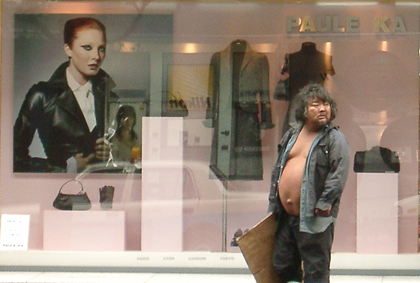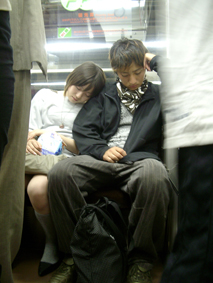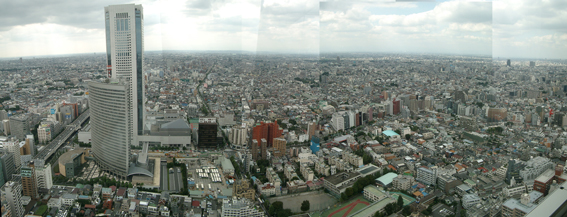| As a part of the process of globalisation the thoughts and feelings of a nation are distilled and exported as culture. This is the counterbalance to tourism, for those without the money, time, opportunity or inclination to visit other countries and cultures. Huis ten Bosch on the Japanese island of Kyushu gives you all the fun of a real Dutch village without the trouble of actually dealing with life in the Netherlands. From the counter of a rotating sushi bar in Paris we feel that we are experiencing a taste of Japanese culture. Under such calculated conditions it is difficult to perceive any culture accurately. |
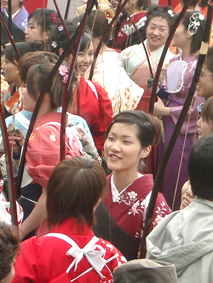 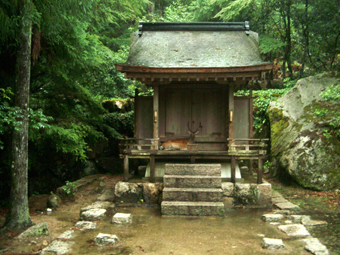  |
| Recently I was enjoying listening to a compilation CD of Japanese Music. I took the opportunity to quiz my Japanese colleagues regarding the lyrical content of a particular song. Despite my colleagues having a breadth and depth of Japanese culture between them, with a sound knowledge of Japanese folk tales and Bunraku theatre, they were unable to enlighten me regarding this music. The song in question, Agari jo by Yasuko Yoshida, was an Okinawan song, and the language in which it was sung, despite sounding Japanese to my ears, was foreign to their ears and they could not attempt a translation. This situation can be repeated if we focus on the Ainu, Japan's aboriginal people, now only found in isolated pockets in Hokkaido in the far north of Japan. The people of Japan like to identify themselves with the prehistoric Jomon people of the Japanese archipelago. However they do not like to think of themselves as Ainu. The Ainu and the Jomon may possibly be of the same origin. The Jomon were supplanted by the Yayoi people, who in turn were supplanted by the Yamato people, each influx coming ultimately from main-land China, via the Korean peninsula. This is Japan, a country perceived as and promoted as homogeneous and yet not perhaps fully aware of its component parts. |
|
| It all reminds me somewhat of the British isles. There has been an influx of many peoples into the United Kingdom, though many limit their British-ness to the coming of the Angles and the Saxons. Viking long ships, Spanish galleons, nor the Celtic worlds of Wales and Ireland figure heavily in our concept of " being British". Thankfully our situation is somewhat more complex nowadays, with a diverse mix of peoples from around the world able to identify themselves as British citizens. However, few people from Bradford would be able to understand Gaelic( Welsh, Scots or Cornish), and perhaps few people from the outer Hebrides would be able to pin-point Bradford on a basic map. Nevertheless, we as British citizens are perceived within the global market as one group, homogeneous in our nationality and culture. The Beckamhams have been endorsing a plethora of products in Japan for a solid three years now. |
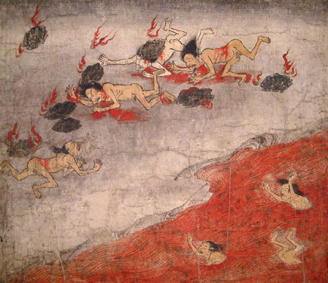 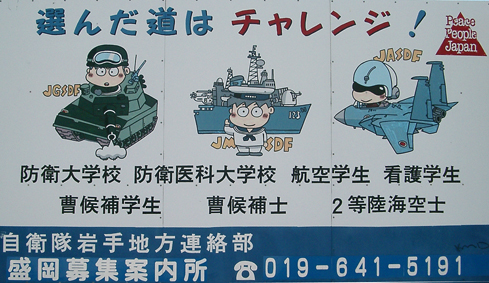 |
| With the promotion of visual art in the UK we have been presented, in recent years, with those artists associated with the "Brit-Art" phenomenon. This has now been expanded, belatedly and with heavy subsidies from the Scottish Arts Council, to include artist from Glasgow. However this is but the tip of the iceberg when it comes to creativity currently existing within the UK. This is much like the diversity within society in general. Not all people can make it into the "Top Ten" and many are kept out because they do not conform to the values or trends conceived and set by others. |
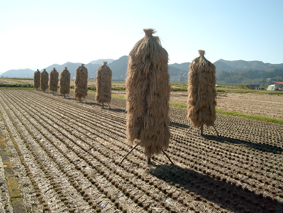 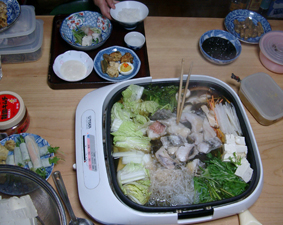 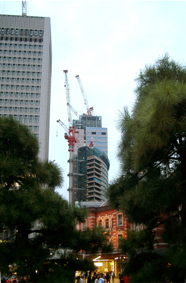
|
| If you have made any attempt to follow the movements of the Japanese art world in recent years you will have followed the codes laid out by the art market, which bear little resemblance to the actual diverse reality of the Japanese visual arts. What we perceive as Japanese culture is filtered through market forces and cultural interest groups, perhaps carefully calculating what might be accepted by western eyes. |
|
My knowledge of Japan's art has developed through the many years now that I have been exhibiting in Japan. I have also come to know many artists in Asia, all of who have a strong awareness of Japanese art. This exhibition has been an attempt to being to a wider public a sample of the diversity of Japanese visual art. The artists have been selected not because of their association to a particular gallery or organization. The artists were selected from a sort list drawn up by other artists, curators and non-commercial galleries. They are representative of Japan to some degree, without representing Japan. Their work shows a range of creative thought, through several generations and through a geographical disparity. This exhibition is not definitive in any sense. Simply and modestly it aims to show a cross section of contemporary Japanese art and to offer the possibilities of multiple interpretations of Japanese culture and society as seen through the work of the 14 individual artists. Aeneas Wilder, July 2005
iimawashi: contemporary art from Japan |



